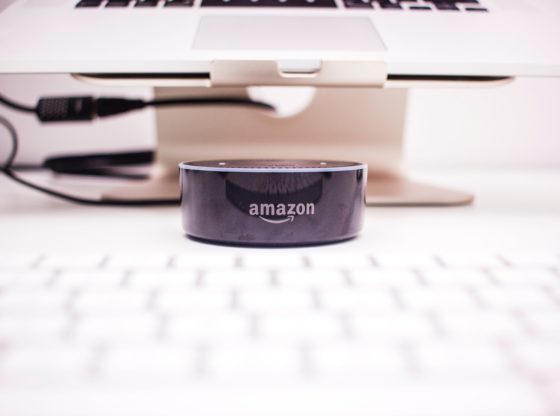Massive online retailers, like Amazon, are squashing small businesses. It’s a modern-day David and Goliath story. Except in this version, the eCommerce giant represents Goliath and small businesses and mom-and-pop shops find themselves in David’s shoes. How can a small business compete with a retailer that acquired a high-end grocery chain for $13.7 billion, forfeited $7.2 billion to offer free shipping, and can drop $1.5 billion to build a hub for its cargo planes?
Love your customers
Amazon offers a wide selection at a reasonable price and includes free, two-day shipping as the cherry on top. This is Amazon’s expression of love to its customers. There’s only one problem. Amazon can’t deliver on the buyer experience like a small business can. Small businesses have the personal-touch advantage. They can build relationships with their customers by being more personable. Amazon is just a big brand without a real personality to connect with.
For brick-and-mortar stores, customer experience is a broad subject. It covers store ambiance, employee attentiveness, business hours, customer appreciation programs and handling complaints swiftly. For e-commerce businesses, it’s about clear return policies, seamless website experiences, using technology to talk with your customers and sharing the cost of shipping upfront.
When I go to my local coffee shop, I’m greeted by name with a smile and my beverage of choice is committed to their memory. The jazz music plays softly in the background as people are scattered around the coffee shop reading, chatting calmly with a friend or typing away on their laptops. On Amazon, I can buy a classic coffee roast, purchase a jazz music CD and find a cute coffee mug, but it doesn’t compare to the coffee shop experience.
Technology is your best friend
Seeing customers as the individual that they are is harder to do for big-box retailers. How do you make someone feel noticed in a sea of people? For online retailers, dedicate a team to customer service chat that is ready to answer questions as they arise. Invest in a CRM that tracks conversations and interactions with customers and sends tailored content and recommendations based on the customer type. Generic messages won’t yield the results that highly-targeted communication does. People are swapping face-to-face interactions for texting, social media, and surfing the web. A small business can add their voice to the mix by creating social media campaigns, display ads and sending text alerts. Make sure to stay actively engaged with customers by responding to their comments online.
Convenience is key
Amazon is the king of convenience, but don’t let that deter you. Going back to the coffee shop experience, if it took me twenty minutes to get my coffee I would find a different coffee shop. Consumers are gradually becoming conditioned to expect products fast and shipping free. If it’s financially not feasible to offer free shipping all the time, look for ways to offer free shipping to loyal customers during certain seasons, or after reaching a certain purchasing threshold. Insert a personalized, branded note in each shipment that’s sent. Zappos encourages customers to order extra merchandise with the promise they can return what they don’t want or don’t use. The more obstacles you can remove for your customer, the better they will feel about making repeat purchases.
A retailer that accounts for more than 43% of online sales isn’t one you can easily compete with (even Walmart is struggling to gain ground) but these steps will set your business apart from those mammoth merchants.
Nick Hoffman is the owner and founder of Share a Refund, a shipment auditing and recovery service. An innovator by nature, he is always looking to create the next, best invention that will move the world forward.
